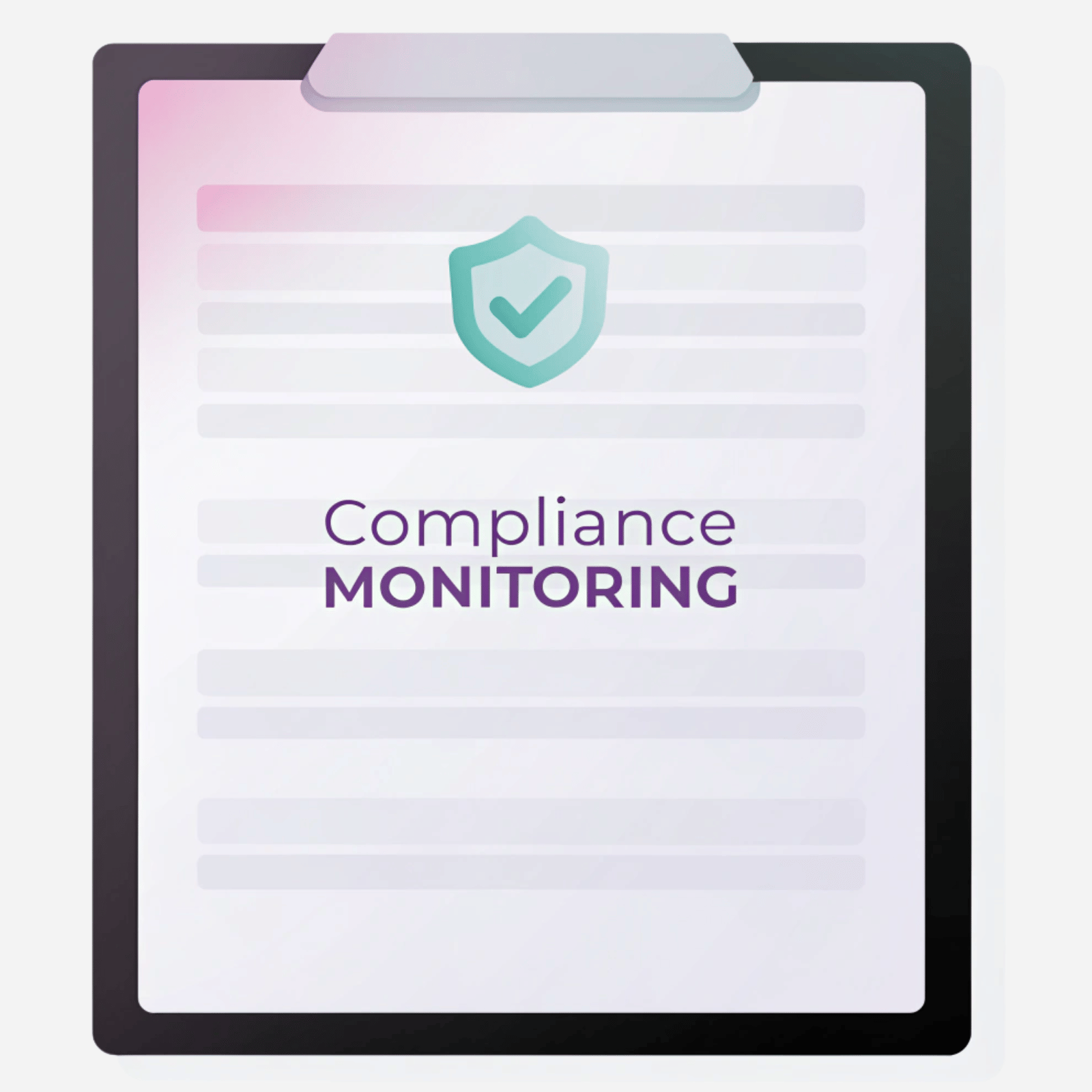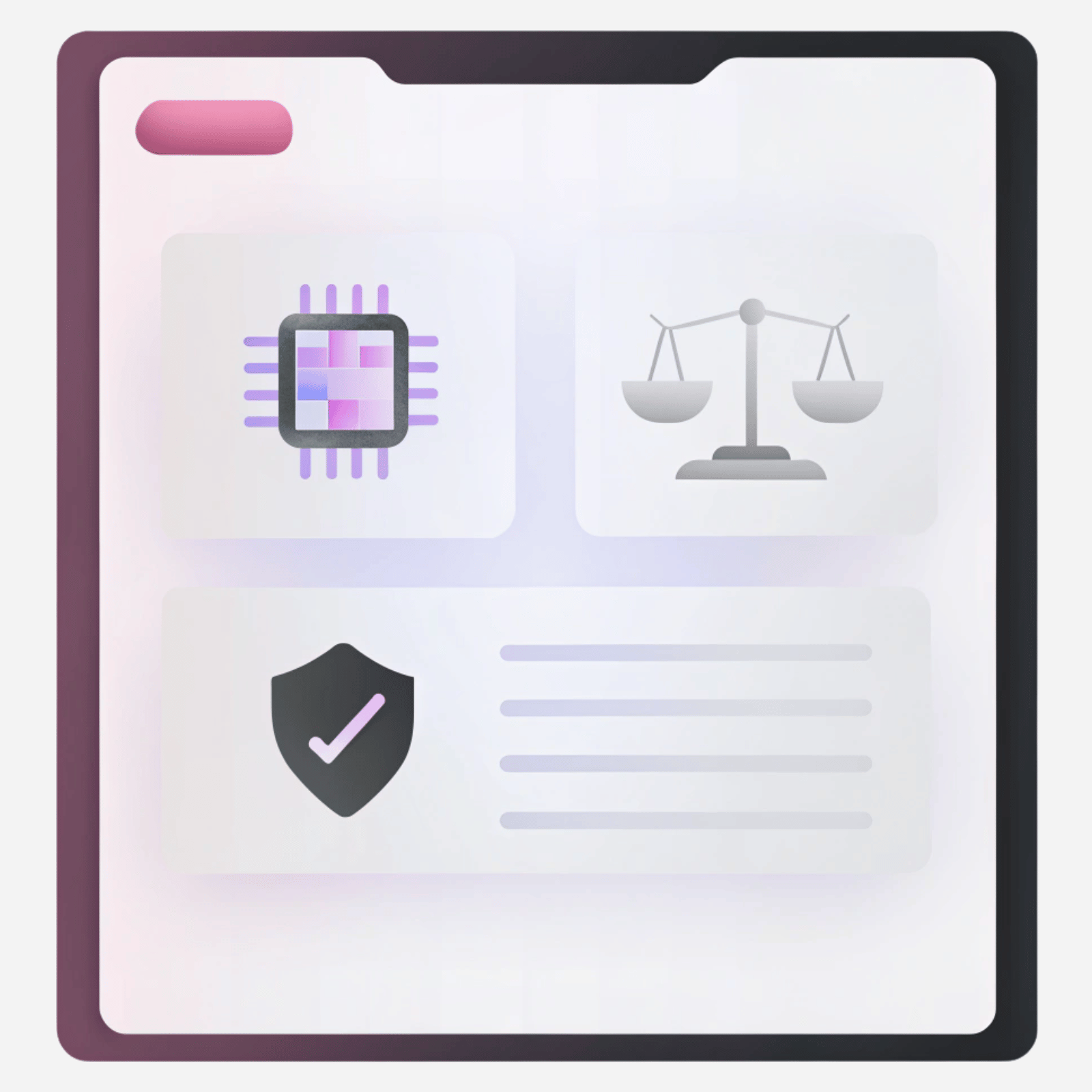
Overview
Today, we hear the word “agent” more and more frequently, especially in the fields of AI development, machine learning, and different large language model integrations.
According to the Markets and Markets research, the global Autonomous AI and Autonomous Agents Market is estimated to be worth almost $29 billion by 2028 at a CAGR of 43% during the forecast period. In other words, the market will increase almost four times compared to 2025. These numbers are incredible compared to the regular business stats we may see in other industries where the annual growth usually could be higher.
Agents are rapidly becoming essential software for businesses, marking the beginning of a new era for AI agent platforms. These platforms empower businesses to integrate and customize agents to meet their specific needs without investing excessive time in self-learning processes.
Artificial intelligence and intelligent agents are now at the forefront of innovation, working hand-in-hand. In this article, we will delve into the core features of agents in artificial intelligence, explore their key characteristics and workflows, and examine the technical aspects of their capabilities. Additionally, we’ll take a closer look “under the hood” to analyze the different types of agents.
Let’s go!
Agents in Artificial Intelligence: What Are They?
An AI agent can be described as intelligent software designed to execute specific tasks or achieve predefined goals on behalf of users or organizations. The key characteristics of an intelligent AI agent include:
- Autonomy. Agents in artificial intelligence operate without human intervention, making decisions, learning from their own experience, and improving performance over time.
- Perception. AI agents use triggers to gather data from their environment. In the case of software agents, this might involve receiving input from a user interface or data streams.
- Reasoning. All artificial intelligence and intelligent agents have the ability to process information and make decisions. This involves using the latest AI technologies, machine learning models, or other forms of artificial intelligence to interpret data and determine the best course of action.
- Action. Agents in AI can take actions to influence its environment. This might involve sending commands to a system, generating responses to user queries, or making recommendations.
- Specific Behavior. Agents in AI are created to achieve specific objectives, which can be predefined or dynamically determined based on different contexts.
AI agents are already reshaping industries with applications like:
- NLP-Powered Chatbots: Conversational agents that interact with users in natural language, providing support, answering questions, or facilitating transactions.
- Recommendation Systems: Algorithms that analyze user behavior to suggest relevant products, services, or content.
- Autonomous Software Solutions: Systems that make real-time decisions, such as route planning for self-driving cars or dynamic pricing in e-commerce.
Types of AI Agents
AI agents come in a variety of forms, each with distinct structures, components, and capabilities that allow them to be applied across a wide range of industries and scenarios. Let's explore these types in greater detail, uncovering their unique strengths and use cases.
- Simple-Reflex Agents are the most basic type, responding directly to a stimulus detected by one or more sensors. These agents interpret the signal, make a quick decision, and act on it. You’ll often find these AI agents in systems like smart home devices or thermostats, where the response to a simple trigger (like temperature change) leads to immediate action.
- Model-based Reflex Agents go a step further by maintaining an internal model of the world. This model helps the agent understand how its actions impact the environment, enabling more informed decision-making. Over time, these agents adapt and refine their strategies. Examples include predictive analytics used in warehouses for inventory management and the decision-making systems in self-driving cars, where the agent constantly updates its understanding of the road and traffic conditions.
- Goal-Based Agents are designed to tackle specific problems by creating strategies that guide them toward their objectives. They break down tasks, take steps toward completing them, and continually evaluate whether they are progressing toward their goal. These agents are widely used in complex applications, such as AI in gaming (think of beating human chess masters) or virtual assistants, where achieving a user's goal requires dynamic problem-solving.
- Utility-Based Agents excel when faced with multiple potential actions and need to evaluate the best option. They assess the outcome of various decisions using a utility function - ranking each possibility based on factors like cost, time, or efficiency. These agents play key roles in applications like optimizing city traffic flow, recommending products, or suggesting TV shows based on user preferences.
- Learning Agents are the most adaptive, constantly improving their understanding of their environment through experience. These agents create and test hypotheses to better navigate and interact with the world. A prime example is spam filters, which constantly learn from new data to improve their accuracy and prevent unwanted messages from reaching your inbox.
While these five categories are some of the most common ways to classify AI agents, the classification system itself is flexible. The criteria you choose will depend on how you want to interpret the agents’ capabilities and applications. Regardless of the classification, these AI agents provide invaluable contributions across a variety of fields - whether it's enhancing personal convenience with smart home devices or transforming industries with intelligent, data-driven decision-making. As AI continues to evolve, so too will the roles these agents play in shaping the future.
AI Agent vs Chatbot — What's the Difference?
At first glance, AI agents and chatbots might seem similar, but they differ significantly in their scope, capabilities, and application contexts.
An AI agent is a broad, autonomous entity that observes its environment, makes decisions, and takes actions to achieve specific goals. These agents are versatile and often operate across multiple systems, leveraging advanced AI techniques like reinforcement learning, computer vision, and predictive analytics. For instance, an AI agent could manage inventory in a warehouse, control a fleet of drones, or optimize energy usage in a smart grid.
A chatbot, on the other hand, is a specialized type of agent focused exclusively on conversational interactions. It is designed to engage with users through text, voice, or video, understanding and responding to inputs within a conversational framework. Chatbots are widely used in customer support, virtual assistance, and user engagement for websites and apps.
Unlike AI agents, chatbots have a more limited scope and are typically programmed with predefined rules or dialogue models. While some advanced chatbots integrate machine learning for improved responses, their primary purpose remains conversational.
The comparison table below highlights these differences in more detail.

While chatbots are considered a subset of AI agents because they operate autonomously and interact with users, their capabilities are far more specialized. Chatbots excel in creating interactive conversations but lack the versatility of broader AI agents, which are designed for more complex and varied tasks.
For example:
- AI Agent: A virtual assistant managing your smart home by adjusting lights, heating, and security settings.
- Chatbot: A conversational interface on your phone that answers queries about smart home controls.
AI agents represent a broader category of intelligent systems that go beyond conversational applications. While chatbots are a type of AI agent, they are primarily designed for specific, interaction-based use cases. Understanding this distinction can help businesses choose the right technology for their needs, whether it's automating conversations or solving complex, multi-system problems.
What is the Multi-Agent System (MAS)?
A Multi-Agent System (MAS) is a collection of agents that include both artificial intelligence and human agents. These agents interact with each other and the environment to achieve specific objectives, like solving customer care problems or smart searching for specific information.
Core Features of MAS:
- Autonomy. Each agent operates independently, making decisions without direct intervention.
- Social Ability. Agents interact with other agents through communication, enabling collaboration and information sharing.
- Reactivity and Proactivity. Agents perceive their environment and respond to changes (reactivity) while also taking the initiative to achieve their goals (proactivity).
Using multi-agent systems (MAS) provides significant advantages over single-agent systems across various domains. For instance, deploying a swarm of simpler robots rather than a single, highly complex agent not only reduces design complexity but also enhances economic efficiency and scalability. Furthermore, such systems exhibit greater resilience, as the failure of a few robots has minimal impact on the collective ability to achieve shared goals.
One unique advantage of MAS is their adaptability. These systems can dynamically reconfigure themselves to address changing environments or unforeseen challenges, leveraging their distributed nature to find solutions in real time. This flexibility is particularly valuable in scenarios like disaster response, where conditions evolve rapidly, and swift adaptation is critical.
In the realm of artificial intelligence, agents are naturally inclined to collaborate when mutual benefits are apparent and when cooperation is essential to accomplish their objectives. They work with agents possessing complementary skills, forming specialized teams to tackle multifaceted challenges. Within these teams, artificial intelligence systems and intelligent agents engage in sophisticated negotiation, coordination, and decision-making processes. This collaborative approach allows them to create and execute detailed action plans for efficient problem-solving while fostering innovation through collective intelligence.
The Anatomy of an AI Agent
AI agents are composed of several interconnected components, each playing a crucial role in the agent's ability to perform tasks autonomously and intelligently. These components form the structural foundation of an AI agent, empowering it to interact with its environment, make decisions, and learn over time. While the exact configuration can vary depending on the application, certain core components are universally recognized as essential for most AI agents.
Let's take a closer look at these foundational elements:
1. Actuator: The Agent's Hands-on Tool
The actuator is the component responsible for carrying out the actions that an AI agent decides to take. It’s essentially the "muscle" of the agent, enabling it to affect the environment. Once the agent has processed information and determined an action, the actuator executes that decision by interacting with the external world.
- In a virtual assistant, the actuator might initiate an action like sending an email or adjusting a thermostat.
Actuators can vary greatly depending on the AI agent's domain and functionality, but they all share the ability to physically or virtually execute the agent’s decisions.
2. Perception (Sensors): The Agent’s Senses
Perception refers to the sensors or mechanisms through which the AI agent gathers data about its environment. Just like humans rely on their senses (sight, hearing, etc.) to understand the world around them, AI agents rely on their sensors to collect relevant information.
- In software agents, perception might involve gathering user inputs, monitoring data streams, or processing interactions through a user interface.
Effective perception is crucial for decision-making because it provides the raw data the agent needs to evaluate situations, assess conditions, and adjust its behavior accordingly.
3. Knowledge Base: The Agent’s Memory and Experience
The knowledge base serves as the memory of the AI agent, storing relevant information that it can use to make decisions. This knowledge can include both static data (e.g., facts or rules) and dynamic information (e.g., past interactions or learned patterns). A well-constructed knowledge base allows an AI agent to:
- Reference prior experiences to make more informed decisions.
- Adapt to new situations by accessing both predefined and newly acquired knowledge.
- Store and organize vast amounts of data, ranging from simple facts to complex models.
A knowledge base is a critical aspect for enabling learning and adaptation, which helps the agent improve its performance over time.
4. Processor: The Brain of the AI Agent
The processor is the component responsible for handling the core decision-making processes of the agent. It’s where the raw data from the environment is processed, interpreted, and turned into actionable decisions. The processor typically involves advanced computational resources and may include:
- Decision-making algorithms that determine the best course of action based on available data.
- Learning models, such as machine learning algorithms, that enable the agent to refine its decision-making over time based on past experiences.
In essence, the processor functions as the "brain" of the AI agent, where all the critical thinking and planning happens. It uses complex algorithms and models to simulate intelligence, making real-time decisions based on the agent's environment, its goals, and its stored knowledge.
Additional Components for Flexibility and Adaptability
While the four components outlined above form the core of any AI agent, many advanced agents also incorporate additional elements that increase their flexibility and adaptability:
- Learning Module: Enables the agent to improve its performance over time through experiences, adjusting its behavior based on new data. This can be based on machine learning techniques, including supervised learning, reinforcement learning, or unsupervised learning.
- Communication Interface: Allows the agent to interact with other agents or systems. This module is critical in multi-agent systems where collaboration is key, such as in smart cities or collaborative robotics.
- Goal Management: Manages the agent's objectives, adjusting them based on environmental conditions, new information, or changes in the task at hand.
The structure of an AI agent varies significantly based on its tasks, meaning some AI agents may include all components while others do not.
How AI Agents Operate: Behind the Scenes
Previously, we discovered the core components of an AI Agent. Now, it is time to understand how they work “under the hood”.
AI Agent Modules
1. Perception: Gathering Information
The first step in an AI agent's operation is perception - how it gathers data from its environment. Perception is the foundational stage where the agent "feels" or "senses" its surroundings.
Perception might involve gathering data from user interactions, websites, APIs, or external databases.
The data collected forms the raw input that the agent uses to understand its context and environment.
2. Data Processing: Analyzing the Information
Once the data is gathered, the AI agent’s processor steps in to analyze it. This involves applying algorithms and models to interpret the data, extract relevant insights, and assess the situation.
- Decision-Making Models: AI agents use decision-making frameworks, such as machine learning models, heuristics, or rule-based systems, to process the information and determine the next course of action.
- Machine Learning: Many AI agents incorporate machine learning algorithms that allow them to continuously improve their understanding of the environment by learning from previous interactions and outcomes.
This stage essentially mimics cognitive processes, where the agent "thinks" about what action to take next based on the information it has.
3. Reasoning and Decision Making: Making Smart Choices
After processing the data, the agent needs to make decisions. This is where its reasoning capabilities come into play. AI agents utilize various strategies for reasoning, often based on predefined rules, probabilistic models, or learned experiences.
- Rule-Based Systems: In simpler agents, reasoning is driven by a set of predefined rules. For example, a chatbot might follow a script that tells it how to respond to specific customer queries.
- Predictive Analytics: Some AI agents apply predictive models, which analyze past data to forecast future outcomes, helping them make proactive decisions.
The agent's ability to reason and decide what action to take is what truly sets it apart from simple automation tools, making it adaptable to changing circumstances.
4. Action: Executing the Decision
Once the agent has made a decision, it must take action. This is the final step in the process, where the agent’s actuators come into play. Depending on the type of agent, action could take various forms:
For virtual assistants or chatbots, action could involve sending a response to a user, initiating a transaction, or updating a system.
The effectiveness of the agent’s actions depends on its ability to accurately perceive the environment, process data correctly, and make informed decisions.
Finally, the agent’s architecture is compiled by essential modules that collectively enable autonomous, intelligent behavior, each contributing uniquely to the agent's overall performance.
AI Agent Workflow
As with any other tool, an agent in artificial intelligence has its own workflow. Let’s look at its steps deeply.
Step 1. Planning
As a user, you define your goal for the AI agent. The AI algorithm then formulates a detailed plan to achieve this goal. For instance, if your goal is to "Find the Best Autonomous Agent Project," the application will:
- Define what "the best" means and create a checklist.
- Search for the best autonomous agent projects based on that checklist.
Step 2. Tool Selection
The AI agent evaluates available resources and selects the most suitable set of tools for executing the plan. For studying autonomous agents, the AI might choose:
- ChatGPT-4o to establish criteria for the "best" framework.
- A search engine like Google for comprehensive online research.
Step 3. Execution
The next step for the agent is to activate the selected tools to perform the tasks. For example:
- ChatGPT might determine that "the best" means the most popular, leading to the GitHub repository with the most likes.
- It then searches for the "Most liked Autonomous Agent GitHub repository" on Google.
Step 4. Evaluation
The final step for AI agents involves reviewing the outcomes and comparing them against the initial objectives and strategies. If the results align with the intended goals, the process is considered complete. However, if there's a mismatch, the app will pinpoint the steps that require re-execution or adjustment. For instance, if it discovers multiple AI agent projects with similar patterns on GitHub, it might trigger a reevaluation of its selection criteria and prompt a return to the tool selection phase. This dynamic feedback loop ensures that the AI continuously refines its approach, adapting to changing needs and optimizing its decision-making process to achieve better results.
AI Agents in Action: Real-World Use Cases
When can AI Agents be applied? How can they be applied in terms of your business? Let’s try to find it out.
AI agents can manage tasks, dependencies, deadlines, obstacles, and solutions, reducing the need for constant communication and operational costs. By integrating seamlessly into your existing workflows, AI agents can enhance information flow between departments and update project milestones based on real-time data. And this is not the end of their usage. Here are several use cases when agents can be applied.
AI Agents in Customer Support
AI agents can dramatically improve the efficiency of customer support teams by automating routine tasks and handling inquiries. They can be applied in these ways:
- 24/7 Support: AI agents can respond to customer queries at any time, provi шоding solutions to frequently asked questions, guiding customers through troubleshooting steps, and escalating complex issues to human agents as needed.
- Ticket Management: AI agents can automatically categorize and prioritize support tickets, assigning them to the appropriate department or team member based on urgency, thus speeding up response times and improving customer satisfaction.
- Customer Feedback Collection: AI agents can automatically collect and analyze customer feedback, helping businesses understand sentiment and improve products or services based on customer insights.
AI Agents in Marketing
AI agents are revolutionizing marketing by automating tasks and providing valuable insights. The common ways they may be used are as follows:
- Advertisement: AI agents streamline ad creation, track performance, and optimize campaigns, freeing up marketers to focus on higher-level strategy and creative tasks. They can also fine-tune ads based on real-time performance data, ensuring maximum impact with minimal human intervention.
- Content Creation and SMM: AI agents maintain a consistent brand voice across web, mobile, and social media platforms. By generating content tailored to audience preferences, these agents ensure that all communications are consistent and resonate with target demographics.
- Market Analysis: With the ability to monitor social media activity, customer reviews, and broader trends, AI agents assess public sentiment, making proactive adjustments to marketing strategies based on the latest market dynamics and consumer preferences.
AI Agents in Healthcare
Healthcare is another area where AI agents can make a significant impact, especially in managing patient interactions and improving administrative efficiency. Key use cases include:
- Appointment Scheduling: AI agents can automate patient appointment booking and reminders, reducing administrative burdens and improving scheduling efficiency.
- Telemedicine Support: AI-powered agents can triage patient inquiries, provide initial assessments, and direct them to the appropriate healthcare professionals, streamlining patient care.
- Medical Records Management: AI agents can help organize and update medical records, ensuring that patient information is accurate, accessible, and up-to-date for medical professionals.
AI Agents in Education
AI agents are capable of transforming education by enhancing personalized learning, automating multiple tasks, and providing innovative educational tools, such as AI-powered LMSs, and similar. Here are the most common use cases in this area:
- Personalized Learning: By analyzing individual student performance and learning preferences, AI agents create adaptive learning pathways that offer tailored resources and feedback, making education more engaging and effective.
- Intelligent Tutoring: AI-powered tutors deliver on-demand, real-time assistance, helping students grasp difficult concepts and guiding them through their learning journeys, all while simulating the individualized attention of a human tutor.
- Automated Grading and Feedback: With the ability to grade assignments, quizzes, and exams in record time, AI agents provide actionable insights to students, identifying strengths and areas for improvement, and fostering a deeper understanding of the material.
- Virtual Interactive Classrooms: AI agents facilitate remote learning by simulating real-world scenarios, offering interactive labs, and delivering dynamic content that helps bridge the gap between in-person and online education.
- Learning Analytics: By tracking and analyzing student performance data, AI agents provide actionable insights that both students and teachers can use to fine-tune learning strategies and improve academic outcomes.
Example of Intelligent Agent
There are multiple products and services today that may be recognized as intelligent agents in artificial intelligence examples. However, the best way to show you real examples of AI agents is to present our solutions.
IONI - AI Agent for Compliance
Springs engineers developed a top-notch solution that changes the current AI market - an application that allows you to create and customize AI Agents for compliance up to the different business options and cases.
One of the biggest powers of IONI is the ability to be customized to your wishes and standards. Your solution may use an existing AI Agents platform, custom-coded elements, or integrate 3rd party tools. Our team connects all components and launches AI-enabled web and mobile apps. Helps you maintain and evolve a solution that actually works for your business.
Don’t hesitate to contact us so we can discuss your needs, problems, and opportunities. Our AI experts will recommend options, and possibly an MVP to act as proof of the concept. Once you are comfortable with the quality of AI Agents' work - we implement a full solution, add features, etc.
What Lies Ahead for AI Agents?
AI agents have already infiltrated an impressive range of industries: from custom web and mobile development to revenue operations, from patient care in healthcare to sales development, and from product analytics to data engineering.
But this is just the tip of the iceberg. As the technology behind AI agents continues to evolve, the breadth of tasks they can handle will grow exponentially in the coming years. We're not just talking about another passing trend in AI; AI agents represent a true leap forward in how we can leverage artificial intelligence.
In the near future, engaging with multiple AI agents on a daily basis will become the norm, reshaping the way we work, learn, and interact with technology. As we move toward a new era of AI-driven automation, the impact of these agents will be felt across all aspects of life, revolutionizing both individual workflows and entire industries.









